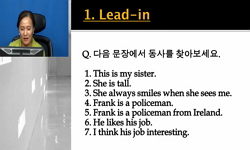This article analyzes the romanticism of Lee Tae-Jun and “Munjang”, a coterie magazine founded in 1939, focusing on the discourse of ‘Korean Classic Literature’. Unlike the former researchers’ view, Lee Tae-Jun’s romantic perspective on th...
http://chineseinput.net/에서 pinyin(병음)방식으로 중국어를 변환할 수 있습니다.
변환된 중국어를 복사하여 사용하시면 됩니다.
- 中文 을 입력하시려면 zhongwen을 입력하시고 space를누르시면됩니다.
- 北京 을 입력하시려면 beijing을 입력하시고 space를 누르시면 됩니다.

이태준 고전 담론과 『文章』의 낭만주의 -내간체의 발견과 〈춘향전〉의 귀환을 중심으로- = The Invention of ‘Naeganche’ and the Return of Chunhyangjeon : the Discourse of Korean Classic Literature and Lee Tae-jun’s Romanticism
한글로보기https://www.riss.kr/link?id=A108438552
- 저자
- 발행기관
- 학술지명
- 권호사항
-
발행연도
2022
-
작성언어
-
-
주제어
이태준 ; 이병기 ; 문장 ; 낭만주의 ; 한중록 ; 내간체 ; 춘향전 ; 고전 담론 ; 통속성 ; Lee Tae-Jun ; Lee Byeong-Ki ; Munjang ; Naeganche ; Chunhyangjeon ; Hanjungrok ; Romanticism
-
KDC
700
-
등재정보
KCI등재
-
자료형태
학술저널
-
수록면
105-139(35쪽)
- DOI식별코드
- 제공처
-
0
상세조회 -
0
다운로드
부가정보
다국어 초록 (Multilingual Abstract)
This article analyzes the romanticism of Lee Tae-Jun and “Munjang”, a coterie magazine founded in 1939, focusing on the discourse of ‘Korean Classic Literature’. Unlike the former researchers’ view, Lee Tae-Jun’s romantic perspective on the Korean Classic Literature was able to be distinguished not only from Hú Shì(胡適)’s, but also from Lee Byeong-Ki’s. Lee Tae-Jun’s romanticism symbolized by his tendency of ethnographic exhibition toward the Korean Classic literature, initialized the language of Orientalism. Dividing the past of Korean language and literature from the modern, he tried to invent a modernity of Korean language and literature. In this process of objectification, the idea of a ‘Second Naivete’, based on the Romanticism from the European modernity, was combined with the Orientalism (東洋論) of Japanese Imperialism. The Invention of ‘Naeganche’ and the Return of Chunhyangjeon in Munjang’s period were the output of Lee Tae-Jun’s romantic perspective. The legacy of Lee Tae-Jun’s romanticism, consequently, is still influencing the research fields of Korean language and literature, especially of the Korean Classic Literature.
동일학술지(권/호) 다른 논문
-
- 민족어문학회
- 남기현 ( Nam Ki-hyun )
- 2022
- KCI등재
-
知退堂 李廷馨의 16세기 士禍史 정리 작업과 그 의미 - 『黃兎記事』·『壽春雜記』를 중심으로-
- 민족어문학회
- 정용건 ( Chung Yong-gun )
- 2022
- KCI등재
-
19세기 여성 하위주체 강남홍의 열(烈)의 재전유와 그 의의
- 민족어문학회
- 유해인 ( Yoo Haein )
- 2022
- KCI등재
-
- 민족어문학회
- 강용훈 ( Kang Yong Hoon )
- 2022
- KCI등재




 KCI
KCI KISS
KISS






